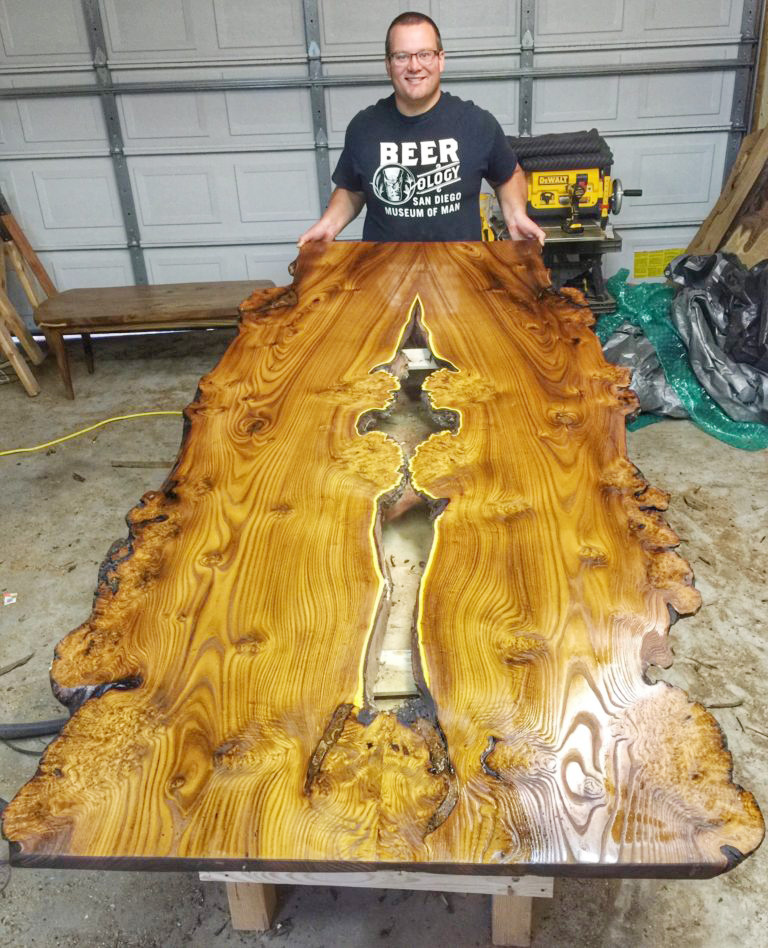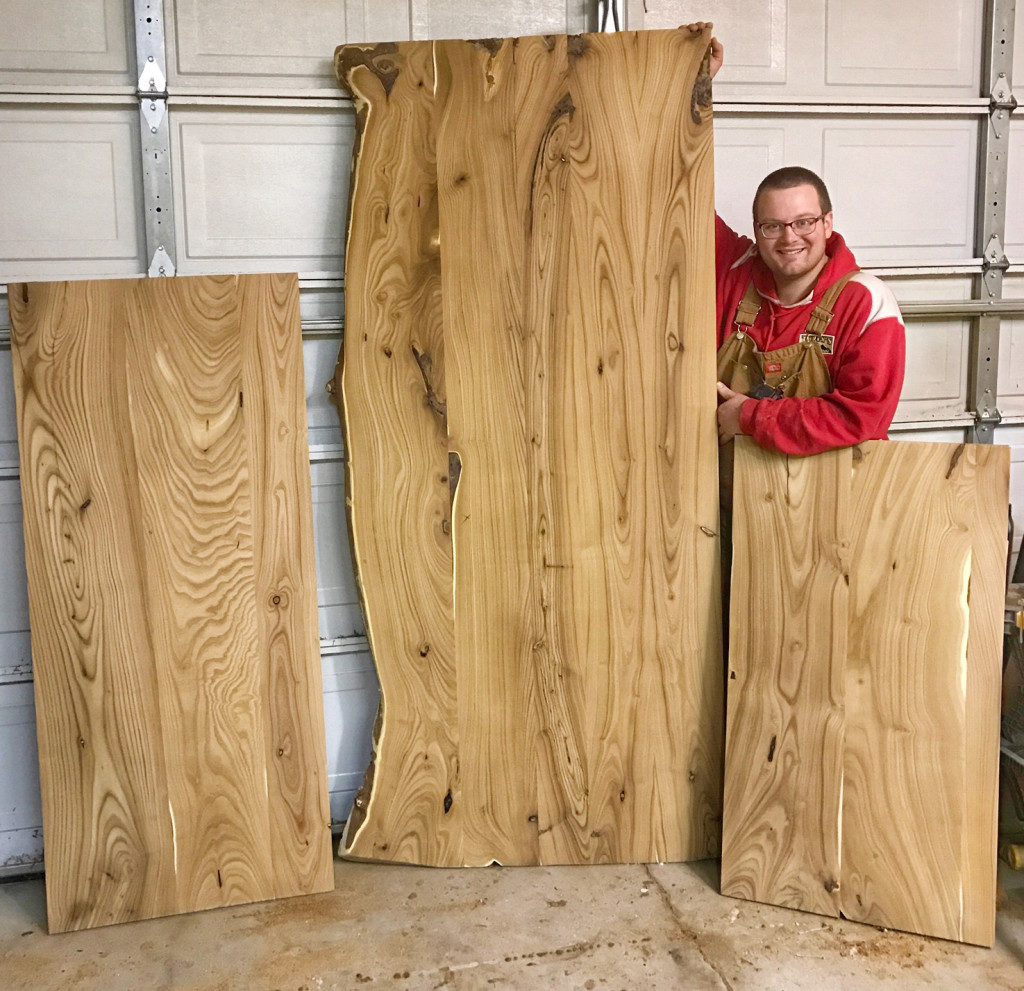Do you love woodworking? Well, let’s dive into the fascinating world of woodworking with a unique question: “Is Russian olive wood good for woodworking?” 🪵💡
When it comes to finding the perfect wood for your woodworking projects, it’s always exciting to explore different options. And Russian olive wood definitely stands out! 🌳✨
In this article, we’ll uncover the secrets of Russian olive wood and discover whether it’s a good choice for your woodworking endeavors. So, grab your tools and let’s get started! 🛠️✨

Is Russian Olive Wood Good for Woodworking?
When it comes to woodworking, the choice of wood can greatly impact the outcome of a project. One lesser-known option that has gained traction among woodworkers is Russian olive wood. This unique and beautiful wood offers several advantages, but it also poses some challenges. In this article, we will explore the qualities of Russian olive wood and discuss its suitability for woodworking projects.
The Characteristics of Russian Olive Wood
Russian olive wood, also known as oleaster wood, originates from the Russian olive tree, scientifically known as Elaeagnus angustifolia. This tree is native to parts of Europe and Asia and is known for its hardiness in harsh environmental conditions. The wood from the Russian olive tree possesses several distinctive characteristics that make it a unique choice for woodworking projects.
First and foremost, Russian olive wood has a beautiful grain pattern that can vary from straight to interlocked. It often features a warm, golden hue with streaks of darker tones, giving it a visually appealing appearance. The wood is also known for its durability and strength, making it suitable for a variety of woodworking applications such as furniture, cabinetry, and decorative items.
Furthermore, Russian olive wood has a high oil content, which contributes to its natural resistance to rot, decay, and insect damage. This inherent resistance makes it an excellent choice for outdoor projects, such as garden furniture or decking. It also means that it requires minimal maintenance and can withstand exposure to different weather conditions without significant damage.
The Benefits of Using Russian Olive Wood
There are several notable benefits of using Russian olive wood in woodworking projects. One of the main advantages is its unique appearance. The striking grain pattern and warm tones of the wood can add a touch of elegance and natural beauty to any project. Whether used in furniture or smaller decorative items, Russian olive wood stands out and creates a visually appealing result.
Another benefit of Russian olive wood is its strength and durability. Due to its hardness and resistance to wear and tear, projects made from this wood can withstand heavy use and last for years. Additionally, the high oil content provides added protection against moisture, reducing the likelihood of warping or cracking over time.
Furthermore, working with Russian olive wood can be a rewarding experience. Despite its density, the wood is relatively easy to work with using both hand and power tools. It can be cut, shaped, and sanded smoothly, allowing woodworkers to bring their creative visions to life with relative ease.
Tips for Working with Russian Olive Wood
While Russian olive wood offers many benefits, it is essential to be aware of a few challenges that may arise when working with this type of wood. The first consideration is its density. Due to its high density, Russian olive wood can be difficult to saw and may require sharper tools for clean cuts. It is recommended to use carbide-tipped blades to achieve precise and clean cuts.
Additionally, the high oil content in Russian olive wood can present challenges when it comes to applying finishes. The oil content can interfere with the adhesion of certain finishes, such as water-based ones. It is advisable to use oil-based finishes or sealers that can penetrate the wood effectively and provide long-lasting protection.
Lastly, Russian olive wood may not be readily available in all regions. Its availability can vary, depending on the specific location and local suppliers. Woodworkers interested in using this unique wood may need to do some research and possibly seek out specialized suppliers or online sources to obtain Russian olive wood for their projects.
Conclusion
In conclusion, Russian olive wood can be a great choice for woodworking projects. Its unique grain pattern, durability, and natural resistance to decay make it a suitable option for both indoor and outdoor applications. However, it is essential to be aware of the challenges associated with its density and oil content. By taking these considerations into account and using the appropriate tools and finishes, woodworkers can create stunning pieces that showcase the beauty and strength of Russian olive wood.
Key Takeaways: Is Russian Olive Wood Good for Woodworking?
1. Russian olive wood is known for its beautiful grain patterns and unique colors.
2. It is a hard and dense wood that is suitable for various woodworking projects.
3. Russian olive wood is resistant to rot and decay, making it ideal for outdoor furniture and structures.
4. The wood is challenging to work with due to its hardness, but it can be rewarding with patience and the right tools.
5. Russian olive wood is environmentally friendly as it is often harvested from sustainable sources.
Frequently Asked Questions
When it comes to woodworking, there are various types of wood to choose from. If you’re wondering whether Russian olive wood is suitable for woodworking, you’ve come to the right place. Below are some common questions about Russian olive wood and its potential use in woodworking.
1. How does Russian olive wood compare to other types of wood?
Russian olive wood is known for its unique characteristics, making it stand out from other types of wood commonly used in woodworking projects. It has a beautiful grain pattern with swirls of light and dark tones that can add a distinctive look to your creations. Additionally, Russian olive wood is highly durable and resistant to decay, which means your finished woodworking projects will have excellent longevity.
However, it’s important to note that Russian olive wood is relatively dense, which can make it more challenging to work with than softer woods. Nonetheless, with the right tools and techniques, you can achieve stunning results with Russian olive wood.
2. What are the common applications of Russian olive wood in woodworking?
Russian olive wood is versatile and finds application in various woodworking projects. Its durability and resistance to decay make it ideal for outdoor furniture, such as benches, chairs, and tables. The unique grain pattern of Russian olive wood also makes it a popular choice for decorative items like bowls, cutting boards, and even small sculptures.
Keep in mind that due to its density, Russian olive wood may require more effort when carving intricate details or making precise cuts. It’s always a good idea to take your time and work carefully when using this wood to achieve your desired results.
3. Does Russian olive wood require any special treatment or maintenance?
Russian olive wood is naturally resistant to decay and can withstand exposure to harsh weather conditions, making it low-maintenance compared to some other types of wood. However, if you’re using Russian olive wood for outdoor projects, it’s recommended to apply a protective finish, such as a weather-resistant sealant or oil, to enhance its longevity.
Regular cleaning and occasional reapplication of a protective finish will help keep your Russian olive wood projects in excellent condition for years to come.
4. Where can I source Russian olive wood for my woodworking projects?
There are several ways to source Russian olive wood for your woodworking projects. One option is to consider local sawmills or specialty wood suppliers that may carry Russian olive wood in their inventory. You can also explore online marketplaces or woodworking forums where individuals and businesses sell various types of wood, including Russian olive wood. Additionally, reaching out to local arborists or tree removal services might provide an opportunity to acquire Russian olive wood from fallen or removed trees.
Remember to ensure that the wood you source is properly seasoned and dried before using it in your woodworking projects to prevent any potential issues down the line.
5. Are there any environmental concerns associated with using Russian olive wood?
Russian olive wood is sourced from Russian olive trees, which are considered invasive species in certain regions. These trees can outcompete native vegetation and negatively impact ecosystems. When considering the use of Russian olive wood, it’s important to make sure it’s sourced responsibly and legally. Look for suppliers or sources that follow sustainable practices and adhere to local regulations regarding the harvesting and usage of Russian olive wood.
By choosing responsibly sourced Russian olive wood and supporting sustainable practices, you can enjoy the unique beauty of this wood while minimizing any potential negative environmental impact.

Summary
Russian olive wood can be good for woodworking, but it has some limitations. It has a beautiful grain pattern and is durable, but it can be difficult to work with due to its hardness. It is important to use sharp tools and take precautions to avoid splinters. The wood is also prone to cracking and warping, so proper drying and sealing are necessary. Overall, Russian olive wood can be a good choice for small projects, but it may require extra effort and care.
In conclusion, Russian olive wood can be a good option for woodworking if you are willing to put in the extra time and effort. It has a unique beauty and durability, but it can be challenging to work with. If you are up for the challenge, Russian olive wood can result in stunning and long-lasting creations. Just remember to have sharp tools, be cautious of splinters, and take the necessary steps to prevent cracking and warping. Happy woodworking!
